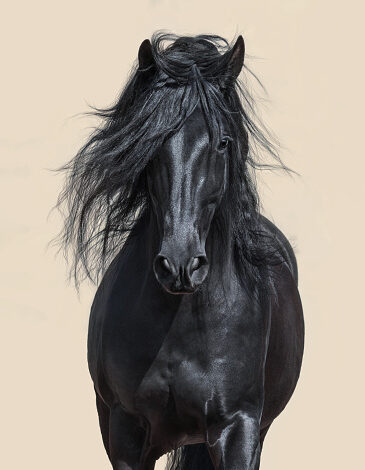The Andalusian Horse

The Andalusian horse is a pure Spanish breed of horse. It has been recognized as a separate breed since the fifteenth century. It is a beautiful, athletic, and elegant horse. It is also one of the oldest breeds in the world. Its unique appearance, sturdy build, and exceptional temperament make it a great choice for any breeder.
Carthusian
Almost wiped out by the French in the 17th century, the Carthusian horse was rescued by Don Vicente Romero Garcia in 1736. He introduced the Carthusian stud brand with a letter C and passed along the genetics to his offspring. After this, the stud passed through various owners, including Dona Rosario Romero, widow of the Viscount of Montesina. The stud’s descendants included Don Roberto Osborne and Don Fernando C. de Terry y del Cubillo, who were both a prominent member of the Spanish royal family.
The Carthusian horse is a Spanish breed that has been cultivated since the Middle Ages. Its origins can be traced back to 1475, when a wealthy landowner named Don Pedro Picado was unable to pay the monks for the land they were using for a stud farm. In return, he offered to give the monks his horses in kind. The monks took them to the nearby village of Guadalete. The Carthusian monks were so proud of their bloodlines, that they refused to introduce Neapolitan and central European horses to the region.
Today, the Carthusian horse is a prized breed. It is renowned for its excellent traits and high performance. In the Jerezano thoroughbred horse market, the breed has a long and distinguished history. It is the cornerstone of the Jerezano thoroughbred horse industry. The Monastery of La Cartuja, founded in the XV century, is a renowned breeding center. The Monks began breeding horses there and tended the livestock for three centuries. In spite of the royal order to introduce central European and Neapolitan blood into the breeding program, they maintained the Carthusian bloodlines.
The Carthusian horse has a unique bloodline, and today there are only a few families that keep pure breeds of the breed. They are usually gray in color, but some are black or chestnut. They are descended from Esclavo, a gray stallion. The head is broad and light with small ears and a rounded forehead. The chest and legs are strong and clean.
Despite being a branch of the Andalusian breed, the Carthusian horse is still one of the most pure strains of the original Spanish horse. It also has one of the oldest stud books in the world. The history of the Carthusian horse is fascinating, but little information is available in English.
Carthusian horse
The Carthusian horse is a distinctive breed with wide, graceful movements. These traits are desirable in a stud horse and make this breed highly desirable. The stallions were originally raised by the Carthusian monks of Jerez, Spain. They were favored by royals and became renowned as walking horses.
The Carthusian monks managed the breeding program for over 300 years and kept detailed breeding records. After the church lost ownership of their lands in 1835, a select few families continued to raise Carthusian horses. Pedro Jose Zapata purchased a few of these horses and used them as breeding stock.
Today, the Carthusian horse is a symbol of purebred Spanish horse breeding. Its bloodline is derived from a herd of Andalusianhorses that was gifted to the Carthusian monastery in 1736. This horse breed has its origins in Jerez, where the monastery’s stud farm became a breeding center for the elite Andalusian horse.
Carthusian horses are distinguished by black spots and gray scales. The horse became famous as the “horse of kings” in Spain, where it was given as gifts to nobility. Spain even used these animals as a sign of goodwill when it was negotiating deals with other countries. They are incredibly hardworking and athletic. This is largely due to the meticulous breeding records kept by Carthusian monks.
Today, the Carthusian horse breed is raised on state-owned farms in Cordoba, Jerez de la Frontera, and Badajoz. The majority of modern Carthusians are gray, though there are also some black and chestnut varieties. The Esclavo, a dark gray stallion, is considered one of the most important ancestors of the breed. The head is light with small ears, while the body is well proportioned and the legs are muscular with clean joints.




